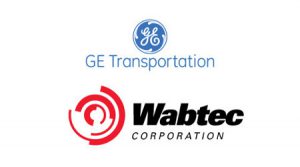April 2017
Rail News: Mechanical
Technology update: On-board monitoring systems

Amsted Rail
Amsted Rail’s IONX® has been working to create smarter trains by developing technology to monitor rail cars and communicate the results to the cloud or to the locomotive. Based on Internet of Things (IoT) principles, IONX’s systems offer a wide range of benefits to rail-car owners, railroads and shippers by reducing operating costs, improving efficiency, and enhancing safety, the company said in an email.
The benefits of monitoring assets and equipment in real-time have been available in other areas of the supply chain for decades. Trucks and automobiles, for example, provide immediate notification when low tire pressure occurs or oil needs changing. With IONX, these same benefits are now becoming available for the freight-rail industry and “promise dramatic changes for the entire supply chain,” Amsted officials said.
The IONX solution features intelligent self-powered wireless devices designed for the rigors of the railroad industry, including sensors employing edge analytics and rail-car gateways that support intra-train communication
It also includes a cloud-based platform to undertake more advanced analytics. Through IONX’s partnership with GE Transportation, critical rail-car information is available in the locomotive cab through GE’s GoLINC™ application management platform.
With IoT technology, rail-car owners are able to utilize bearing and handbrake sensors to optimize or avoid maintenance, which can improve utilization rates and reduce maintenance costs and rail-car repairs. Another benefit is decreased car dwell. Railroads seeking improved velocity and safety can utilize the same sensor technology to monitor operational events to decrease train delays and mitigate risks. Increasing network velocity enhances the bottom line while improving shipper satisfaction, Amsted officials said. Shippers benefit from real-time location information, resulting in reduced inventory and a more optimized supply chain for today’s “just in time” manufacturing systems, the company said. Better knowledge of car handling and the overall shipping environment can lead to less damaged or spoiled goods and products. In addition, early detection of intrusions into rail cars helps reduce and manage theft.
GE Transportation
GE Transportation is aiming to “transform the industry with software-defined machines and solutions that are connected, responsive and predictive,” the company said. GE’s RailConnect 360 is a connected suite of digital solutions that provide data-driven insights to achieve strategic business outcomes across the entire rail enterprise. RailConnect 360’s Asset Optimization solutions provide smarter ways to connect and monitor the locomotive and other assets to improve train performance.

The suite begins with the GoLINC™ platform, a network communication and application management platform that interfaces with both on-board and off-board systems to drive better outcomes.
Trip Optimizer is an automated cruise control system that “ingests data and makes an optimally fuel-efficient plan,” GE officials said. The system has helped customers save over 90 million gallons of fuel, gain around 10 percent in fuel efficiency and surpass a record 150 million miles in auto control mode, according to the company.
Meanwhile, GE’s Network Optimization solutions — Movement Planner and Yard Planner — use advanced algorithms to unlock and optimize network and yard efficiencies, resulting in increased capacity and velocity. They allow a railroad to continuously analyze and optimize traffic, enabling more trains to run on the same route at faster speeds, with less congestion and dwell and without laying new track.
RailConnect360 also includes operations optimization solutions that reduce energy use, leading to increased productivity, lower operational expenses, and a reduction in fuel costs and emissions. The RailConnect™ system delivers mission-critical software to support daily railroad operations, including train and car management, revenue settlement, and car hire accounting.
ENSCO Rail
The ENSCO Rail Vehicle/Track Interaction Monitor (V/TI) is an autonomous monitoring system installed on locomotives to assess vehicle and track conditions. The V/TI uses accelerometers mounted on the carbody and suspension to continuously monitor and transmit events in near real time to the remote server.
Primarily, the V/TI identifies potentially dangerous track conditions associated with broken rail, battered joints/frogs, engine burns, track geometry, and ballast/subgrade issues. Additionally, the V/TI identifies locomotive suspension component failures that result in rough ride conditions and truck hunting.

Paired with the V/TI Monitors is ENSCO Rail’s TrackIT® web application, which is used to view the reported events. TrackIT automatically forwards events to a railroad’s in-house database or directly emails field personnel. Automated reports also are available to compare the condition of instrumented locomotives.
Since 2010, ENSCO Rail has been focused on V/TI data analytics to proactively identify at-risk conditions prior to failure, the company said. Most notably, ENSCO Rail implemented an automated data analytics technique that identifies combinations of repeated track-caused events. Individually, the events were considered low severity, but the company discovered that in combination, the events created elevated risk conditions. The automated algorithm provides a condensed and prioritized list of hazardous locations for field personnel to proactively resolve.
New York Air Brake
New York Air Brake’s (NYAB) LEADER® train-handling system continues to evolve to keep pace with and leverage the rail industry’s transition to data-driven operations, company officials said.
Originally introduced in 2006 as an energy management system, the LEADER system has surpassed its initial goal of delivering fuel savings of 6 percent or more, according to NYAB. The platform was developed and marketed by NYAB’s Train Dynamic Systems division.

Examples of the LEADER train-handling system’s expanded set of capabilities and benefits include:
• AutoControl® of the throttle and dynamic brake, with an advanced on-board display used by the driver to monitor the train’s performance;
• real-time processing of on-board performance data and GPS data on train speed and location to perform thousands of look-ahead calculations per second for choosing the best driving strategy; and
• the ability to adapt to change orders, variations in power output, or even weather conditions for increased on-time arrivals and departures.
In addition, NYAB has several “future-friendly” LEADER enhancements in the pipeline to address customer needs in tomorrow’s data-driven rail operations, the company said.
“Key areas of focus and investment for LEADER include modular [positive train control] compatibility that will enable railroads to conform with that emerging environment at their own pace,” said Vilette Hill, senior product line manager for LEADER at TDS.
Railhead Corp.
Railhead Corp. offers on-board remote monitoring and video systems for locomotives, cab cars and track vehicles. The company has systems installed on Class Is, short lines and passenger-rail systems worldwide.

The system processes multiple data feeds from on-train event recording equipment to deliver fault alerts as they occur to control rooms and repair shops for condition-based maintenance and train operations management. This enables railroads to know where assets are at all times and benefit from real-time condition-based reporting on the health status of on-board systems.
Railhead offers a high-definition IP system that supports up to 16 cameras and delivers what the company terms as “the clearest video quality on the market.” Railhead’s LDVR-HD is Mil-Spec, FRA and SAE rated for durability and reliability in harsh railroad environments. The company’s LDVR-HD recorder is designed to provide “superior” video streaming capabilities, is wireless-ready and will integrate with crash-hardened memory modules and event recorders to support the LDAR requirement, the company said.
Together, the integrated video and data streams from the LDVR together with system data feeds from multiple on-train devices enable railroads to add real-time data to the control room overview. This combined remote management and diagnostic solution will provide a complete picture of rail asset status to the mechanical department, emergency personnel, engineers and operators to improve maintenance and operations.
Railserve
Railserve’s LEAF locomotives employ Observe/Analyze/Respond™ (OAR) technology, which was developed by Alternative Motive Power Systems (AMPS). OAR is designed to allow multiple users to track a wide range of operating data from remote locations, Railserve officials said.
Data from the AMPS Locomotive Control Unit (LCU) on board each Railserve LEAF is processed by OAR, and then transmitted via Wi-Fi or cellular systems to a web-based dashboard for locomotive status and performance monitoring by on-site plant managers or operations personnel at remote locations. The data collected and displayed helps users develop improved safety and operating efficiency by tracking man-down alerts; track speed violations; hard couplings; throttle positions and forward/reverse settings; penalty applications; and remote-control digital tracking.
Additional OAR data can be used to develop more efficient operations, such as improving switching productivity and avoiding wheelslip and excessive idling.
The onboard LCU communicates with all technology on the Railserve LEAF, including power generators, traction control, throttle, reverser, brake and the three-axis accelerometer.
Progress Rail
Progress Rail’s EMD Uptime analytics platform enables railroads to make decisions based on predictive alerts and reduce service delays caused by mission failure. By enabling planned maintenance to replace unscheduled repairs, locomotives can generate more revenue at lower cost, the company said.
In the shop, EMD Uptime helps troubleshoot locomotives the first time they enter, leading to fewer repeat maintenance visits and fewer unnecessary shop visits. The target repair and troubleshooting guides from EMD Uptime’s analytics focus the repair work to the source of the problem, decreasing shop cycle times.

User feedback and repair closeouts facilitate machine learning, which allows EMD Uptime to continuously improve.
All of this leads to improved availability of locomotives. In the yard, EMD Uptime’s predictive analytics provide a reliability index (health score) for locomotives and fleets to help railroads build better trains in less time and with less effort.
Additionally, the platform helps users track their locomotives in the yard and creates better situational awareness across the organization using things like geo-fencing alerts, the company said.
Email questions or comments to [email protected].
Keywords
Browse articles on Amsted Rail IONX Internet of Things IoT GE Transportation GE Trip Optimizer RailConnect 360 ENSCO Rail ENSCO Vehicle/Track Interaction Monitor V/TI New York Air Brake NYAB LEADER Railhead Corp. Railhead Progress Rail Uptime Uptime analytics









Be First to Comment